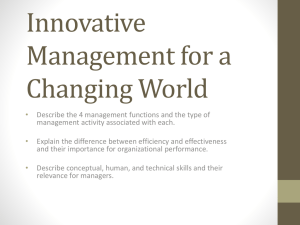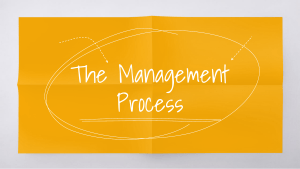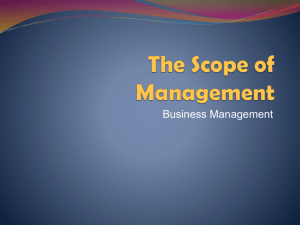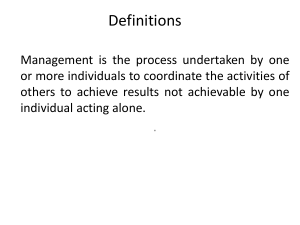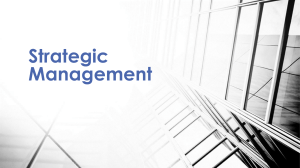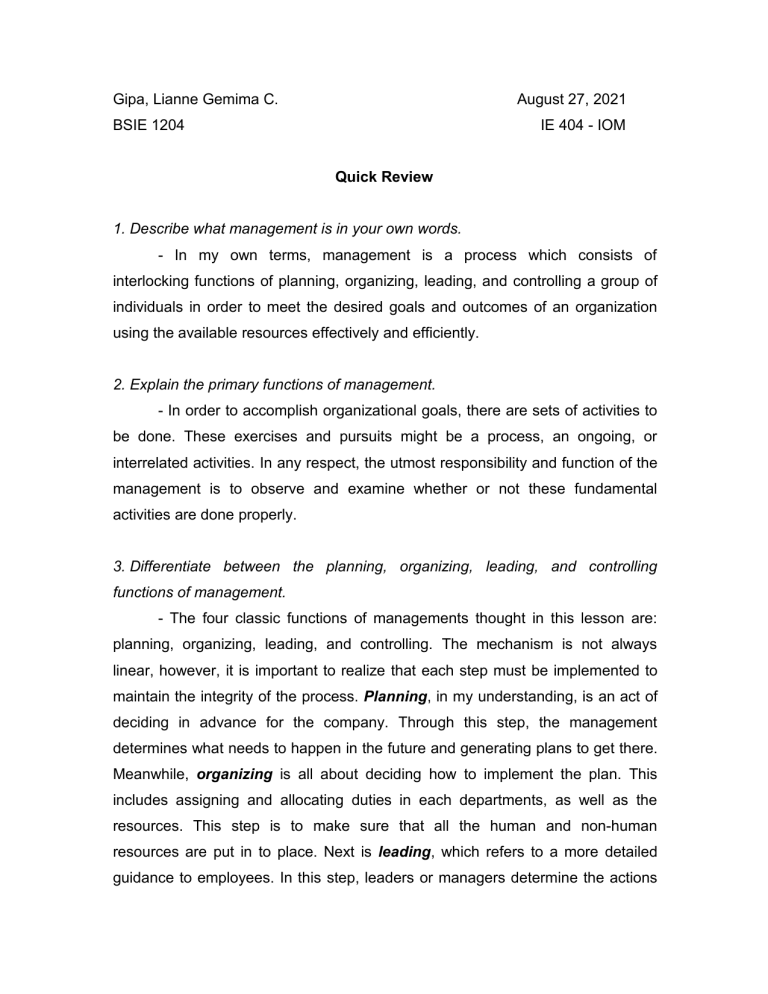
Gipa, Lianne Gemima C. August 27, 2021 BSIE 1204 IE 404 - IOM Quick Review 1. Describe what management is in your own words. - In my own terms, management is a process which consists of interlocking functions of planning, organizing, leading, and controlling a group of individuals in order to meet the desired goals and outcomes of an organization using the available resources effectively and efficiently. 2. Explain the primary functions of management. - In order to accomplish organizational goals, there are sets of activities to be done. These exercises and pursuits might be a process, an ongoing, or interrelated activities. In any respect, the utmost responsibility and function of the management is to observe and examine whether or not these fundamental activities are done properly. 3. Differentiate between the planning, organizing, leading, and controlling functions of management. - The four classic functions of managements thought in this lesson are: planning, organizing, leading, and controlling. The mechanism is not always linear, however, it is important to realize that each step must be implemented to maintain the integrity of the process. Planning, in my understanding, is an act of deciding in advance for the company. Through this step, the management determines what needs to happen in the future and generating plans to get there. Meanwhile, organizing is all about deciding how to implement the plan. This includes assigning and allocating duties in each departments, as well as the resources. This step is to make sure that all the human and non-human resources are put in to place. Next is leading, which refers to a more detailed guidance to employees. In this step, leaders or managers determine the actions that must be done and they direct people to do it. Last of all is the controlling, often described as a feed back loop, is the process of monitoring, measuring, and comparing results to the initial objectives. In addition, when unexpected things happen in the execution of method, the observation and response to the dilemma is what controlling is all about. 4. Differentiate between the functions of top managers, middle managers, firstline managers, and team leaders. - Different level of leadership and organizational roles entails different scopes of responsibilities. Top managers are the one who oversees the whole organization or company, they are generally more strategic as they are the ones who have a broader focus or a big picture perspective of things. The middle managers, on the other hand, receives these “strategic plans” but with a more definite objective. They are the leaders that usually have an area of expertise within their own area of responsibility and typically manages a two or more management levels beneath them. First-line managers and team leaders both manages a group of people but what separates them is that first-line managers manages the activities which aims for organizational objectives and are directly responsible for supervising employees, while the team leader facilitates the actual process of the project. 5. Differentiate between leadership, informational, and decision-making roles. - There are three types of managerial roles, those of which are leadership, informational, and decision-making roles. Leadership, also called the interpersonal role pertains to the relationship that a manager must have with his or her employees. This involves some duties that managers must perform, leadership and influence to his subordinates, as well as communicating inside or outside the business. Next is the informational role which refers to a manager’s responsibility to gather and pass information to be imported whether inside or outside the organization. And lastly is the decision-making roles which relates to a manager’s duty to create decisions for the company and to respond to certain conditions, resolving disturbances, settling resources, and negotiating terms. 6. Explain the advantages that arise from managing people well. - Nearly every organizations and companies are run by people, that is why management can either make or break a workplace. There are plenty of good results that may arise from good management and the best might just be the fact that good management is efficient in achieving goals of the organization, which can lead to the overall success of the company or business. Effective management also optimizes the utilization of resources, better solution at work problems or disruptions, and provides competitive strength to the organization.


